Disclosure: We may get commissions for purchases made through links in this post.
Maintaining your lawn involves watering and fertilizing it on schedule. Proper care and lawn maintenance are important factors in keeping the grass green and the flowers vibrant. Amidst the landscape, however, something is ruining the picture, there are unpleasant orange-brown streaks on your pavement. What are these stains and how do you get rid of them? Well, we've uncovered the root of the problem and the solution for you, just keep on reading to find out.
Those brown streaks are rust stains from iron which is a primary ingredient of your fertilizer. The best thing to do is remove them immediately using a 50-50 solution of water and vinegar or fresh lemon juice. If the stains have been there for a longer time, you might need to use a chemical rust remover to eliminate them.
Now that you have the necessary ingredients in ridding your lawn of those stains, continue reading to find out more information on fertilizers, and how to care for your lawn and pavers in the long run.
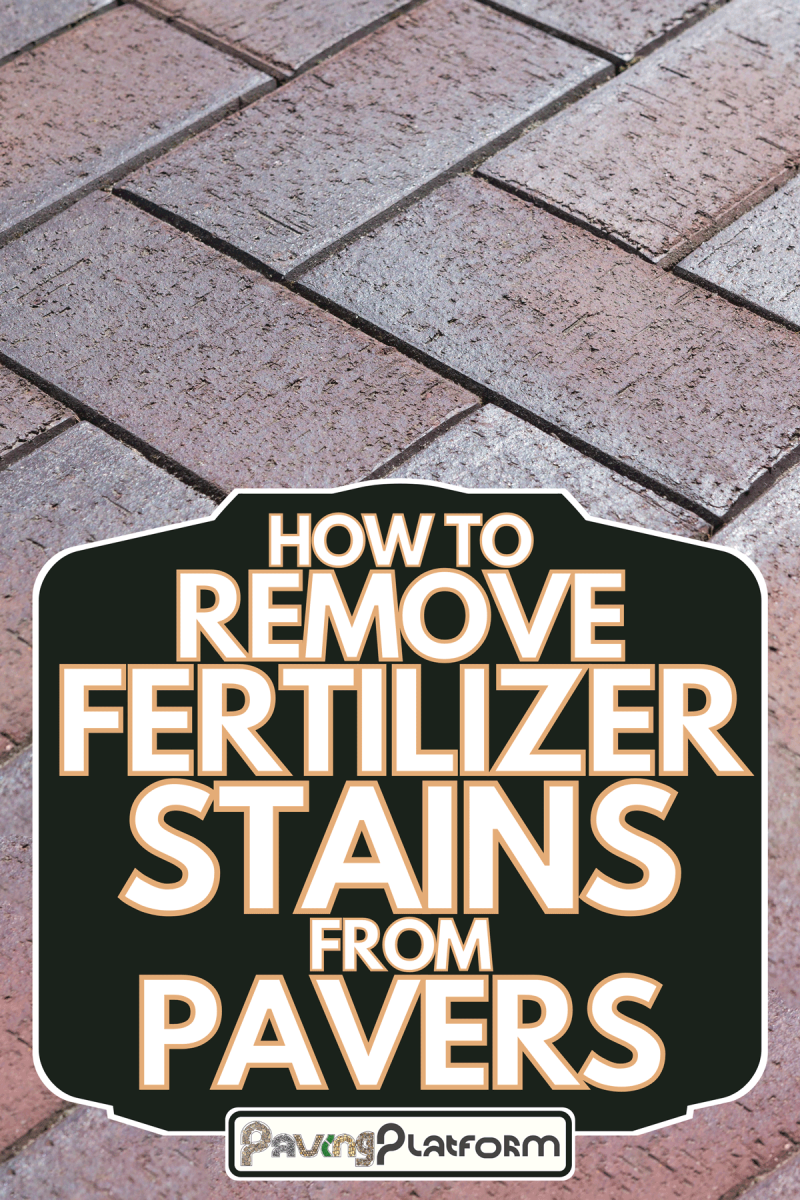
What Causes Fertilizer Stains
A quick aside, since you are dealing with fertilizer stains you have to wonder what's causing them in the first place. Well, plants need iron to produce chlorophyll which gives them their green color and helps them make their food through photosynthesis, as a result, fertilizers contain iron which together with water will cause rust stains.
Removing Fertilizer Stains
Fresh Stains
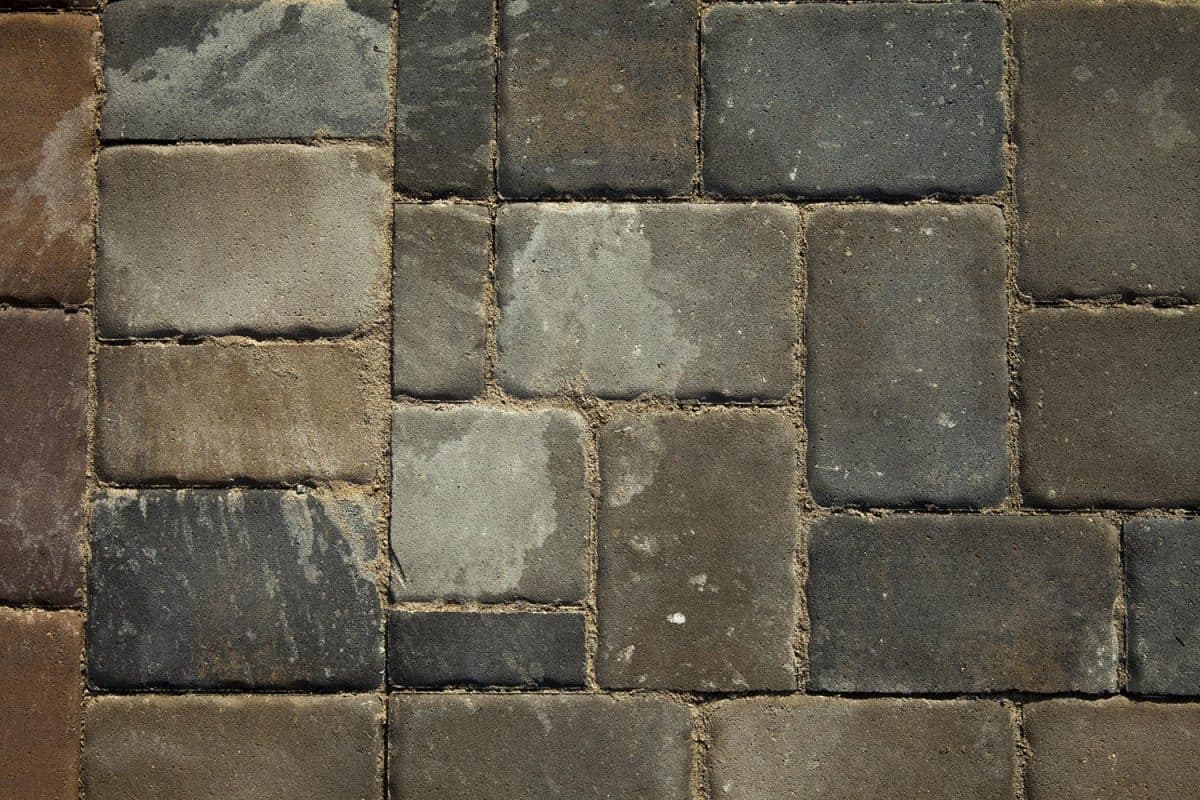
You might have splashed a bit of fertilizer on your pavers when you were applying it on your grass or flowerbed, then after a couple of hours you'll water your plants and within two days you'll notice those orange streaks or spots. It's better if you remove stains immediately and not let them stay longer, because the harder it'll be for you to scrub them off.
Mix 1:1 ratio of water and vinegar, and spray directly onto the stain. The acidic components of vinegar will break down the rust which will make it easier for you to scrub and wash it away. You can also use lemon juice which is also acidic.
Old Stains
For stains that have been sitting there for a long time, you better prepare to put in a bit of elbow grease to brush them off. Old stains require chemical rust removers which are stronger than vinegar or lemon.
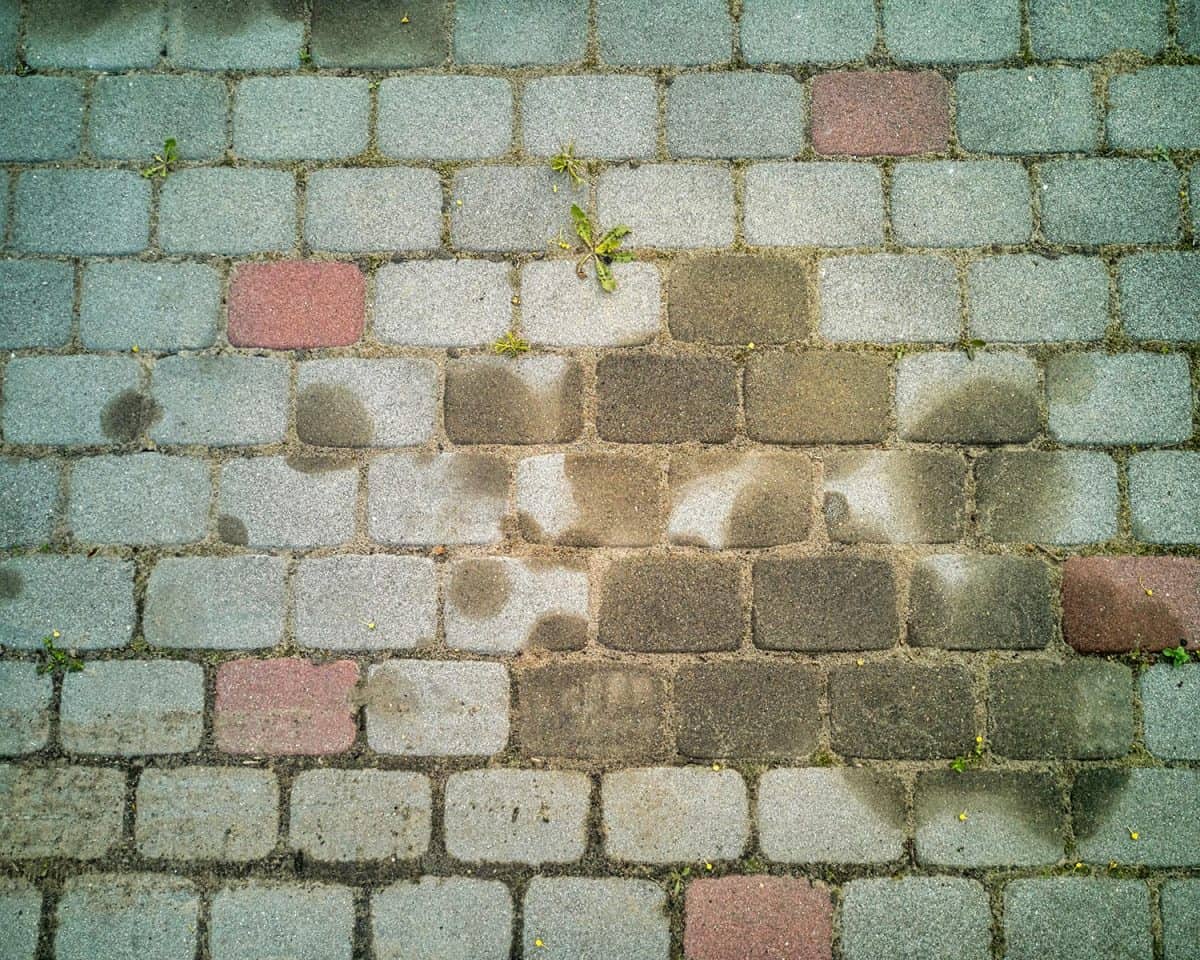
Concrete rust removers contain harmful chemicals so make sure you're wearing masks, eye goggles, and gloves when handling them. Most concrete rust removers come in powder form, make sure to follow the instructions on how to mix properly.
After mixing the substance, apply it to the stained area using a trowel or a mortar spreader. Wait for the allotted time it takes for the chemical to break down the rusty components before hosing it off. Now, depending on the size and how long the stain has been sitting there you might have to repeat the process a couple of times before it's completely gone.
Singerman Laboratories Concrete Rust Remover check it out on Amazon now.
Does Fertilizer Harm Concrete
While unpleasant to look at, fertilizer stains do not do any damage to concrete. The compound that may pose a threat to your pavers that is also found in fertilizers is ammonium sulfate.
Ammonium sulfate is just salt in fertilizers, but when ammonium sulfate comes in contact with water it will result in a chemical reaction that will cause moderate deterioration of concrete, specifically the loss of cohesion and strength resulting in cracks.
Even if it has been a while since there was rain, concrete surfaces are porous which means they have absorbed water underneath which can mix with ammonium sulfate and damage the pavers in the long run by causing expansion of the concrete.
How To Protect Your Concrete
Aside from considering switching to organic fertilizer, which you can find out more about after this section, you can take preventative measures in keeping your pavers intact. One thing that you can do is to remember to re-apply sealers to your concrete every two to five years.
Penetrating sealers as the name suggests penetrates beneath the surface of the concrete to protect it from water damage while maintaining the look and color of your pavers. On the other hand acrylic sealer is a thin, covering film that rests on top of your concrete and can come in different colors or finishes giving your pavers a new look.
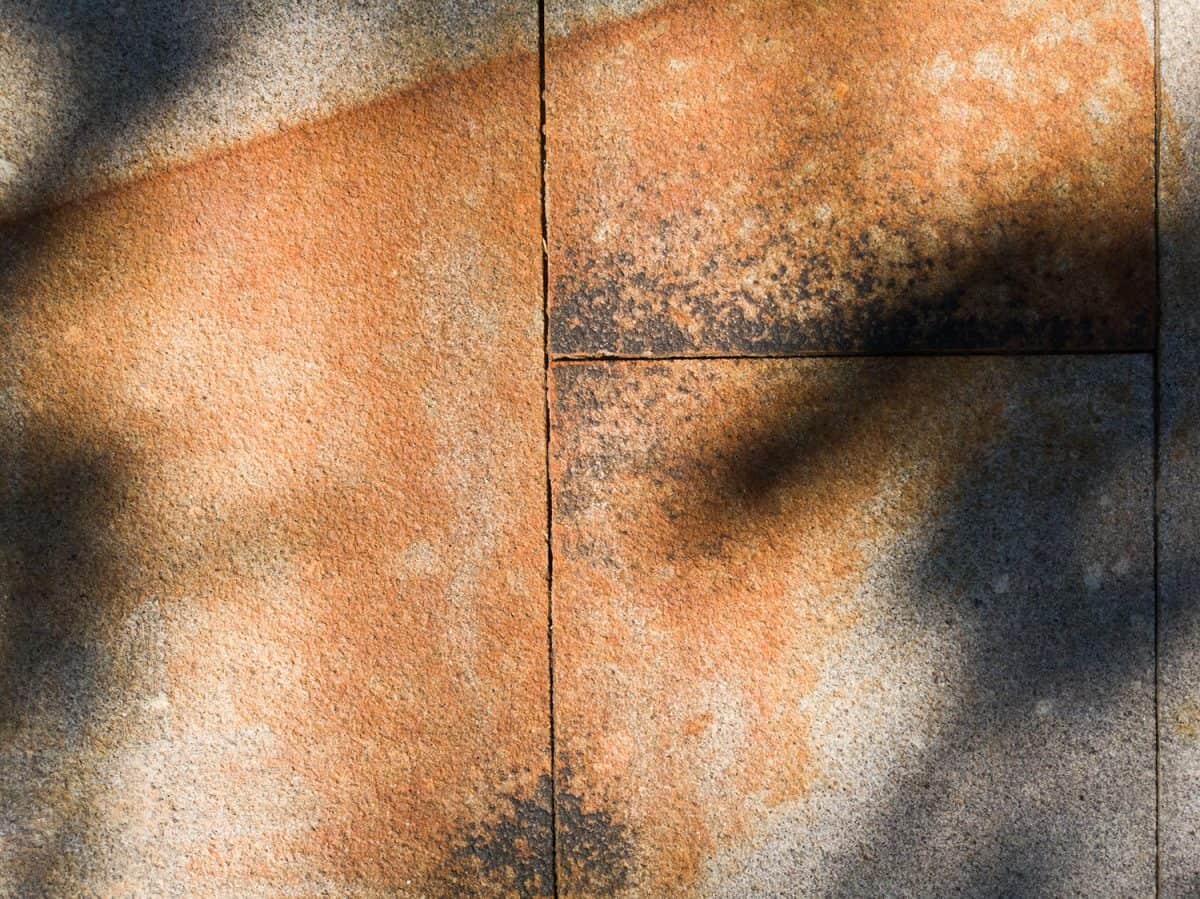
Organic Vs. Chemical Fertilizers
In the previous paragraph, it was mentioned if you'd like to consider switching to organic fertilizers because they are less harmful to pavers. In this section, you can read the pros and cons of these two types of fertilizers and come up with a plan that's suitable for you.
Advantages of Organic Fertilizers:
- No harm will be done from over-application due to the gradual release of nutrients.
- Gradual release of the nutrients means fewer chances of leaching or run-off.
- Micro-nutrients are present.
- Promotes healthy soil.
- Requires fewer applications.
- Does not over-stimulate the growth of plants.
- Long-lasting.
- Beneficial to the environment.
If you'd like to look more into organic fertilizers, check out Scott's Turf Builder Lawn Food on Amazon.
Disadvantages of Organic Fertilizers
- It is more expensive and comes in small batches.
- Takes more work to apply to the soil.
- Inconsistent amount of nutrients.
- Reliant on soil temperature which means a slow release rate of the nutrients needed.
- Pets might be interested to play with it.
- Can attract bugs if not stored properly.
Advantages of Chemical Fertilizers
- Readily available, and can be bought in bulk.
- Highly-accurate nutrient content.
- You can formulate blends for whatever your plant needs.
- Fast results. They release nutrients faster.
- Easier to apply.
- Can be bought in different forms to match your preference. There are pellets, granules, liquid, tablets, etc.
Disadvantages of Chemical Fertilizers
- Controlled-release pellets are expensive.
- Over-application will cause plants to burn.
- Since there is a higher concentration of nutrients, it might bleed off.
- Has water-soluble iron that will stain concrete
- You will require more moving because of the rapid growth.
- Might cause excessive top-growth and stress the roots.
- Does not promote healthy soil.
- Repeated application may cause a toxic build-up of chemicals.
- Chemical fertilizers are made up of non-renewable resources like fossil fuels.
- Absorbs moisture easily even in storage, resulting in caking or hardening of the fertilizer.
- A band-aid solution to a long-term need.
It'll always be your decision on how to care for your lawn and the surrounding area of your home.

Conclusion
Lawn maintenance seems like a daunting task especially now that you have an idea that there is more happening beneath the surface. The wide variety of fertilizers for organic and chemical also poses a difficult choice, but investing in something that will be beneficial in the future seems like a good idea.
Fertilizer stains are not a big deal if you just remember to not give it time to settle and cling to your pavement. Be more proactive in making sure your pavers are also in good shape to spare you from future dilemmas.
To know more about road maintenance and care, you can peak at this post from our blog about alligator cracks on asphalt and if you've had your interest piqued about being more eco-friendly you can read up if your driveway is one, over here.



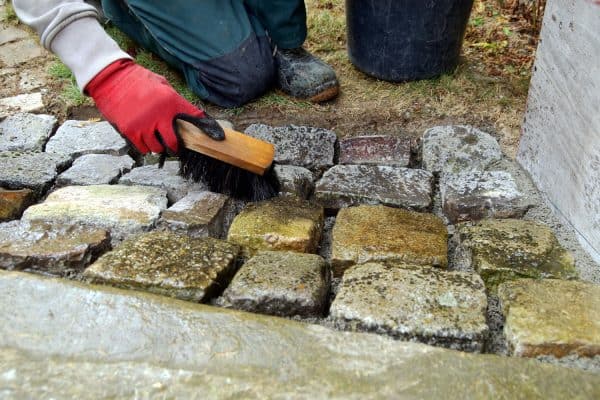
![Blue stone pavers on the garden patio, How To Clean Bluestone Pavers [Care & Maintenance Tips]](https://pavingplatform.com/wp-content/uploads/2022/03/Blue-stone-pavers-on-the-garden-patio-600x400.jpg)
![washing services - block paving cleaning with high pressure washer - Can You Pressure Wash Travertine Pavers? [Best Cleaning Methods]](https://pavingplatform.com/wp-content/uploads/2022/03/washing-services-block-paving-cleaning-with-high-pressure-washer-600x400.jpg)